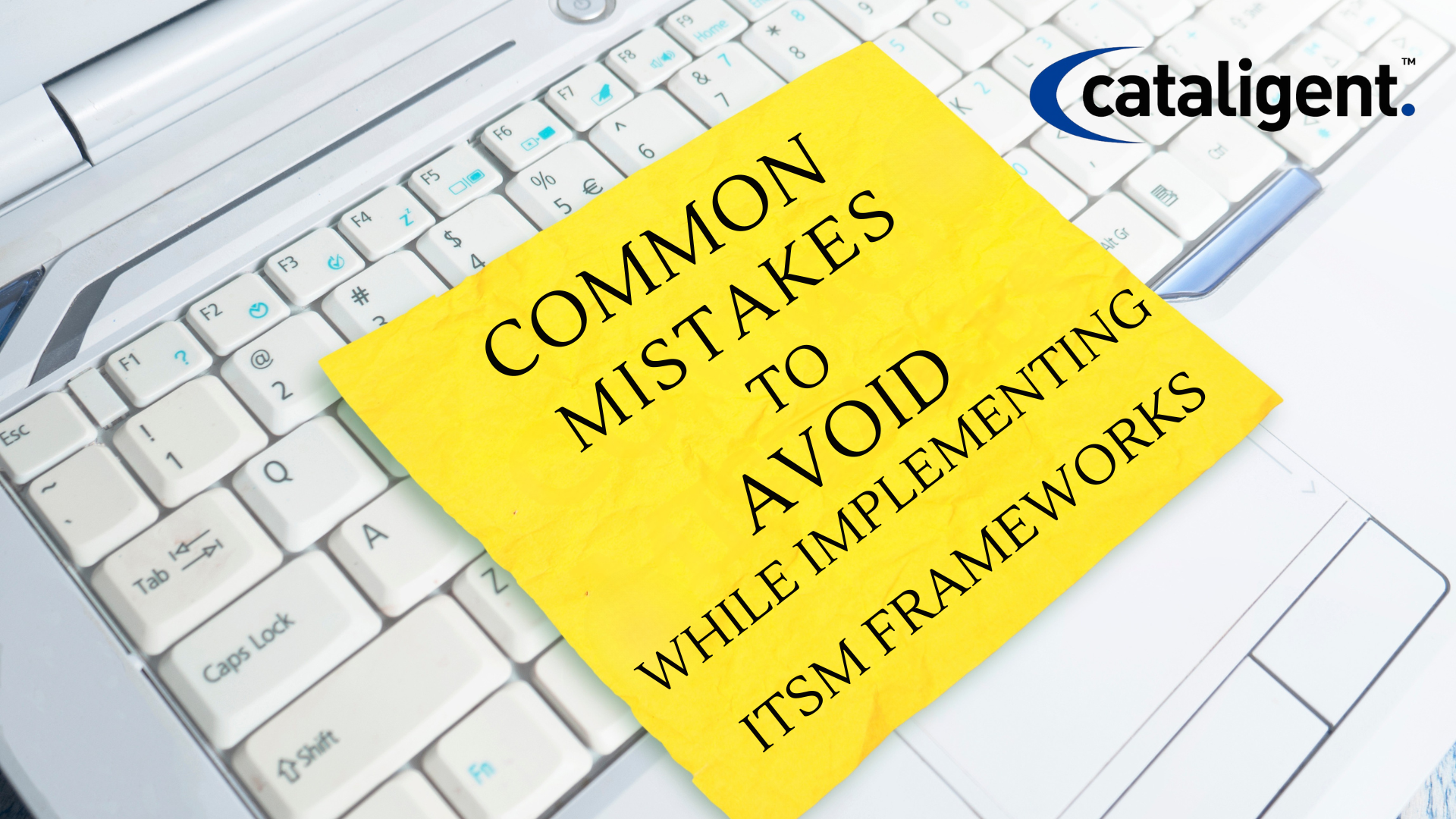Introduction
Implementing an IT Service Management (ITSM) framework can transform the way organizations deliver and manage IT services. However, without careful planning and execution, businesses can fall into common pitfalls that delay outcomes and diminish value. Avoiding these mistakes is essential to ensure a smooth transition and maximize the benefits of ITSM. This guide outlines ten common mistakes organizations make while implementing ITSM frameworks and offers guidance on how to steer clear of them.
1. Lack of Clear Objectives
One of the biggest mistakes in ITSM implementation is starting without clearly defined objectives. Organizations must determine what they hope to achieve—whether it’s improved service delivery, better incident response, or enhanced user satisfaction.
Avoid by:
- Defining SMART (Specific, Measurable, Achievable, Relevant, Time-bound) goals
- Aligning ITSM objectives with business goals
2. Insufficient Stakeholder Engagement
Implementing an ITSM framework requires support from multiple stakeholders. Failing to involve key personnel can result in resistance, misalignment, and project delays.
Avoid by:
- Engaging stakeholders early and consistently
- Creating communication channels for feedback
- Involving leadership to champion the initiative
3. Neglecting Organizational Culture
ITSM isn’t just about tools and processes—it also involves people and behavior. Ignoring the cultural impact of ITSM changes can hinder adoption.
Avoid by:
- Conducting cultural readiness assessments
- Promoting a service-oriented mindset
- Encouraging collaboration and continuous improvement
4. Overcomplicating the Framework
Trying to implement every ITIL process at once can overwhelm teams and derail progress. Starting too big can result in confusion and burnout.
Avoid by:
- Prioritizing essential processes like incident, change, and request management
- Scaling gradually with a phased approach
5. Inadequate Training and Awareness
Without proper training, staff may struggle to adapt to new workflows, tools, and responsibilities. This often leads to poor adoption and service disruptions.
Avoid by:
- Providing comprehensive training programs
- Offering role-based learning paths
- Conducting regular refresher sessions
6. Underestimating Tool Selection and Integration
Choosing the wrong ITSM tools or failing to integrate them with existing systems can cause inefficiencies and data silos.
Avoid by:
- Conducting a thorough evaluation of ITSM platforms
- Ensuring compatibility with existing infrastructure
- Considering future scalability and integration needs
7. Ignoring Metrics and Reporting
Failure to track ITSM KPIs can make it difficult to measure success or identify areas for improvement.
Avoid by:
- Defining relevant performance indicators (e.g., mean time to resolution, first-call resolution rate)
- Setting up dashboards and regular reporting mechanisms
- Using data for continuous improvement
8. Poor Change Management
Resistance to change is common during ITSM implementation. Ignoring the human aspect of change can lead to pushback and disengagement.
Avoid by:
- Developing a structured change management plan
- Communicating the benefits of ITSM clearly
- Celebrating quick wins to build momentum
9. Failing to Align with Business Needs
An ITSM framework must serve the broader business strategy. Misalignment can lead to wasted resources and missed opportunities.
Avoid by:
- Involving business units in process design
- Mapping ITSM processes to business outcomes
- Continuously revisiting and adjusting strategy alignment
10. Lack of Continuous Improvement
Viewing ITSM implementation as a one-time project rather than an ongoing journey is a critical misstep.
Avoid by:
- Creating a roadmap for process maturity
- Encouraging feedback loops from users and staff
- Regularly reviewing and optimizing workflows
Conclusion
Implementing an ITSM framework is a powerful step toward operational excellence, but success requires more than technology—it demands thoughtful planning, communication, and adaptability. By avoiding these common mistakes, organizations can create a resilient, service-oriented IT environment that evolves with business needs and user expectations. Proactive management, clear goals, and a commitment to continuous improvement are the cornerstones of effective ITSM adoption.

